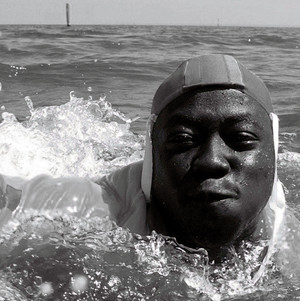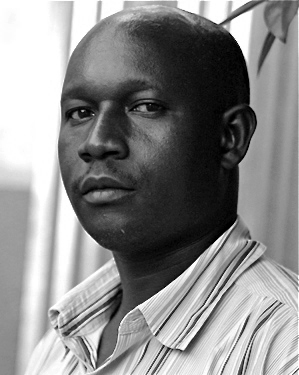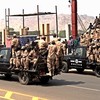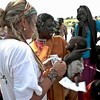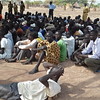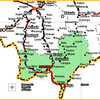Rainfall, lakes and boreholes
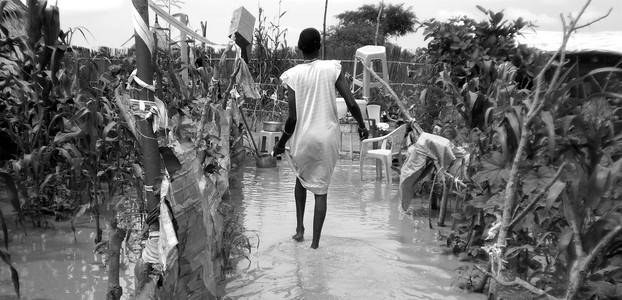
Water resources
* South Sudan has both underground and surface water sources. South Sudan’s surface water sources include the Nile (White Nile). According to the National Environmental Action Plan (NEAP), “an estimated 28 billion cubic meters, representing 30 percent of the flow of Nile water, passes through South Sudan to Sudan and on to Egypt”. Other rivers that provide a source of water in South Sudan are Bahr el-Ghazal, Kit, Ateppi, Tori, Sobat, Maridi, Ibba, Gel, Pongo, Jur, Lotilla, Aniik.
* South Sudan also has numerous lakes: No, Yirol, Anyi, Nyropo, Maleit, Macher, Veveno, Adiet, Luibook and Lotik. Perhaps the most notable surface water source in South Sudan is The Sudd – a vast expanse of floating swampy vegetation (considered by some geographers as the largest wetland in the world).
* Much of South Sudan’s ground water resources are located in what is referred to as the Um Ruwaba Formation, which is prevalent in parts of Western Equatoria, Eastern Equatoria, Central Equatoria as well as in Western Bahr el-Ghazal states. However, according to NEAP the clay and gravel in this area are characterised by poor water-bearing formations - meaning they are unable to bear sufficient ground water.
* Another main source of water in South Sudan is rainfall. However, with the exception of Western Equatoria State, rainfall in other parts of South Sudan is quite seasonal. The main rainy season is often between July and October, with a second rainy season from March to May. Thus, some parts of the country receive more rain than others.
* In general, South Sudan’s water resources are inequitably distributed across the country. The availability and quantity of South Sudan’s water resources also vary from year to year. This variance in the quantities of water resources and the government’s failure to invest in storage facilities has made parts of South Sudan vulnerable to flash floods during rainy seasons while other parts of the country are prone to persistent drought, according to South Sudan’s NEAP.
* Although there are currently no statistics available on external and internal sources of water supply to South Sudan as well as consumption, it is clear that due to the recent increase in the country’s population following the end of two decades civil war, both domestic and commercial demand for water has been steadily increasing. According to the African Development Bank’s South Sudan Infrastructure Development Plan, the commercial and domestic demand for water in South Sudan is expected to continue, putting a strain on water availability across the country.
Access to water
* In South Sudan, ground water is the main source of drinking water, but the government has not invested much into the extraction of these resources. Consequently, many South Sudanese drink surface water, most of which is unclean and untreated.
* The South Sudanese government says 67 percent of the country’s population, both in urban and rural areas has access to improved drinking water sources, which include piped water, public taps, boreholes or tube wells, protected wells, protected springs as well as rain water.
* However, going by the World Health organisation’s definition of access to improved water sources to also mean that the water sources is easily accessible within a distance of no more than 30 minutes round trip to collect water, the actual number of people with access to improved drinking water could be lower.
* The lack of access to clean safe drinking, hygiene and sanitation services has been one of the major causes of diseases in South Sudan. Diseases like diarrhoea, dysentery, and cholera are often common especially during the rainy season, according to the United States Agency for International Development (USAID).
* Statistics from the Ministry of Water Resources and Irrigation indicate that 30-50 percent of water facilities are non-functional at any point in time due to the lack of spare parts, weak maintenance capacity, poor management, or an inappropriate choice of technology.
* According to the Water Sanitation and Hygiene Strategic Plan of South Sudan’s water ministry, the actual level of access to an improved water source in rural areas is estimated at 34 percent.
The government’s role
* South Sudan’s Ministry of Electricity, Dams and Irrigation and Water Resources is in charge of formulating policy, mobilising funds to funding the sector as well as regulating the supply of drinking water. In towns, it is the South Sudan Urban Water Corporation (SSUWC) that is tasked with providing water services.
* The Ministry of Water Resources and Irrigation adopted a water policy in 2007 and a strategic framework in 2011 shortly after South Sudan’s independence. The policy frame- work aims to promote effective management of the quantity, quality and reliability of available water resources with a view towards maximising social and economic benefits and ensuring long-term environmental sustainability.
